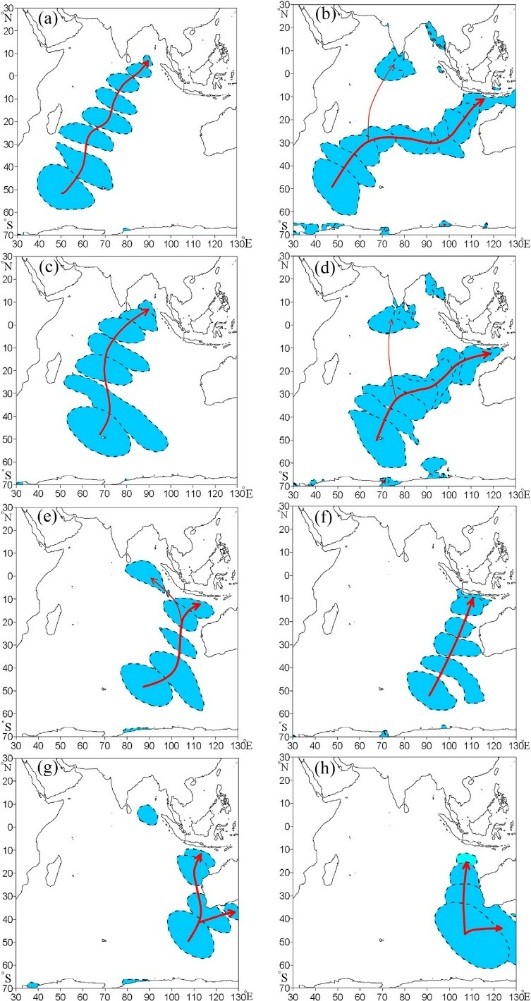State Key Laboratory of Numerical Modeling for Atmospheric Sciences and
Geophysical Fluid Dynamics (LASG)
Institute of Atmospheric Physics, Chinese Academy of Sciences

Vol. 7/No.7 October 2018
[Climate Dynamics]Propagation Route and Speed of Swell in the Indian Ocean
Swell is an indicator of various atmospheric phenomena such as tropical cyclones, distant storms. To date, studies of swell propagation routes, terminal targets, and propagation speeds have been relatively rare. Based on the 45 years ERA-40 wave reanalysis data, Dr. ZHENG Chongwei,Professor LI Chongyin and coauthors, acted as pioneer in proposing a widely applicable swell wave analysis method. By this method, the signal of the propagation route and speed of swell wave can be caught accurately. In this study, the method is applied in the SIOW (Southern Indian Ocean Westerly) area. The result revealed that the main body of the SIOW-related swells typically spread to the waters off Sri Lanka and Christmas Island. And the propagation speeds of swells originated in the SIOW were fastest in May, while slowest in February. The method is propitious to improve the monitoring and warning capability.

Main propagation routes of swells that originated in regions (a and b) A, (c and d) B, (e and f) C, and (g and h) D in (left) JJA 2001 and (right) DJF 2001. (a) The correlation coefficients (CC) between 6 hourly SIA and simultaneous Hs at each 1.58 3 1.58 bin in JJA 2001 were calculated and contoured. Then, the relative large value of CC_0.5 was contoured with the dotted line as the edge and filled with blue color. The CC between Hs of separate 24, 48, 72, 96, 120, and 144 h lags with SIA were similarly calculated. Then, the relative large values of CC_0.5 were also separately contoured with the dotted line as the edge and filled with blue color. The relatively large values of CC were connected by the red solid line. The swell propagation routes in region A were thus obtained. The arrow represents the propagation direction. (b–h) The same method used in (a) was used to plot the swell propagation routes in regions B, C, and D in JJA and DJF.
Citation: Zheng, C. W., Li, C.Y., & Pan, J.(2018). Propagation Route and Speed of Swell in the Indian Ocean. Journal of Geophysical Research: Oceans, 123, 8-21. https://doi.org/10.1002/2016JC012585
Contact: LI Congyin, lcy@lasg.iap.ac.cn
E-mail: lasg_newsletter@lasg.iap.ac.cn
Editors: Chuanyi Wang (wangcy@lasg.iap.ac.cn), Kangjun Chen(ckj@lasg.iap.ac.cn)